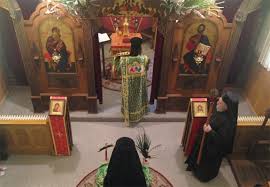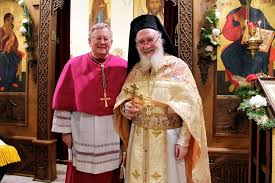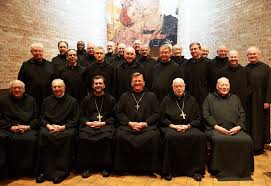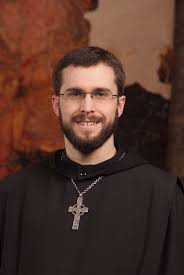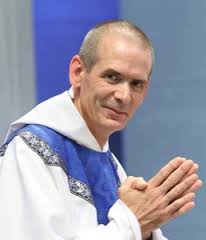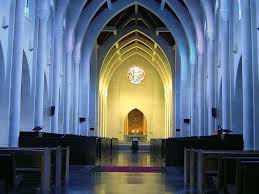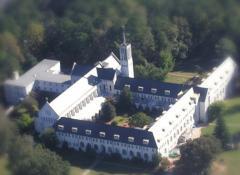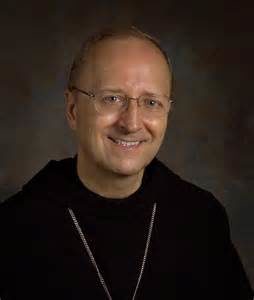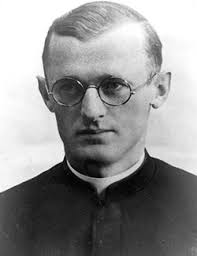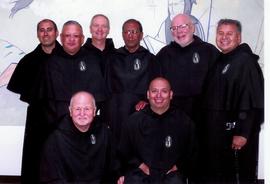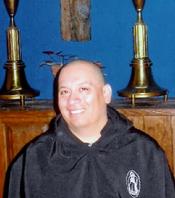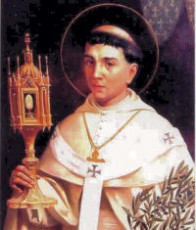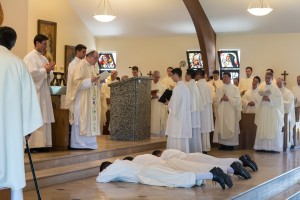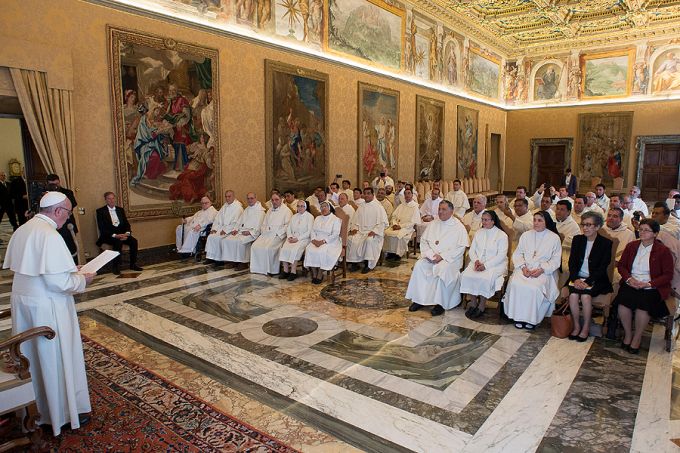 On May 1, the Feast of St. Joseph the Worker, the Church in the U.S. celebrated the first ever Religious Brothers Day. The day is the brainchild of the Conference of Major Superiors of Men and the Religious Brothers Conference, and highlights this often-hidden and under-appreciated vocation in the Church.
On May 1, the Feast of St. Joseph the Worker, the Church in the U.S. celebrated the first ever Religious Brothers Day. The day is the brainchild of the Conference of Major Superiors of Men and the Religious Brothers Conference, and highlights this often-hidden and under-appreciated vocation in the Church.
When I was thinking of orders that have brothers as members, I did not think of the Dominicans, but lo and behold, an article in the Catholic World Report talks about Dominican Cooperator Brothers, who have been a constant presence in the Order since the beginning! The Dominican Province of St. Joseph (Eastern Province) has produced a short video highlighting the work of the Cooperator Brothers.
I would guess that a common question asked of brothers is—why did you not become a priest? The call to brotherhood is  call from God, just as the vocation to the priesthood is a call from God, freely chosen.
call from God, just as the vocation to the priesthood is a call from God, freely chosen.
A Franciscan brother once said to me that in a priest there is barrier of sorts in his role “in persona Christi.” A brother is a man who is standing shoulder to shoulder with you in the trenches. He is accompanying you as a brother would a brother. Yet, at the same time, there is a great paternity about brothers. The holy ones I have known offer wisdom, course corrections, and fatherly concern. Maybe they are more approachable than a priest, because they seem to be the confidants of so many and are “one of us.”
The IRL has a newly revamped website dedicated to religious brotherhoo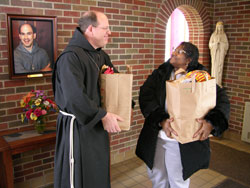 d called fittingly ReligiousBrotherhood.com. In it are links to religious communities and organizations that support and embrace the vocation to religious brotherhood. Some are communities exclusively composed of brother members and others are mixed communities comprised of both priests and brothers. Here are the ones listed who are Affiliates of the IRL but go to our website to see the entire list and links direct to the communities.
d called fittingly ReligiousBrotherhood.com. In it are links to religious communities and organizations that support and embrace the vocation to religious brotherhood. Some are communities exclusively composed of brother members and others are mixed communities comprised of both priests and brothers. Here are the ones listed who are Affiliates of the IRL but go to our website to see the entire list and links direct to the communities.
Alexian Brothers – a lay, apostolic religious community of brothers, bound together by religious vows, who dedicate themselves primarily to live in community and to participate in the ministry of healing in the tradition of the Roman Catholic Church.
The Brigittine Monks – a monastic community, given to prayer and contemplation, according to the Rule of St. Augustine. This is an ancient way of life in its concept of the withdrawal from the mainsteam of activities of society; however, the monks seek to place its ancient traditions into this era, conveying its attraction and needfulness to the culture of our times.
The Brotherhood of Hope – a canonically recognized religious community of brothers who serve the new evangelization of Pope John Paul II, particularly by reaching out to lapsed and uncommitted Catholics, and are involved in college campus ministry and men’s retreats and conferences.
Canons Regular of the Immaculate Conception – a congregation of priests and brothers, living in common according to the Rule of Saint Augustine, dedicating themselves to all the duties and offices of the pastoral ministry in the parishes where they serve.
Canons Regular of St. John Cantius – a Roman Catholic community of priests and brothers dedicated to a restoration of the sacred in the context of parish ministry, by helping others to rediscover a profound sense of the sacred through solemn liturgies, devotions, sacred art and music, as well as instruction in the heritage of the Church, catechetics and Catholic culture.
Conventual Franciscan Friars of St. Bonaventure Province – part of the worldwide Franciscan Order founded in 1209, they emphasize the “conventual” tradition and minister primarily in urban settings. The St. Bonaventure Province was founded in 1939 and its friars serve in Midwest parishes and foreign missions, in education and evangelization, shrine ministry and work with the poor.
Discalced Carmelite Friars, St. Joseph Province – followers of St. Teresa of Avila and St. John of the Cross, they live as brothers in community. With Mary as their patroness, they serve Christ and His Church through ministries of prayer, presence, evangelization and pastoral care.
Franciscan Brothers of Peace – a religious institute of brothers founded in 1982 by Brother Michael Gaworski to live and proclaim “The Gospel of Life” by devoting themselves to serving and defending the most vulnerable of our society.
The Friars of the Sick Poor of Los Angeles – a community whose mission and vision is to give themselves to God in the service of the sick poor and marginalized, whom they receive in God’s name as they follow Christ more closely while “living in the midst of the world.” Hope is the friars’ charism in which they assist the sick poor and marginalized to find meaning in their suffering and sickness as being redemptive, inviting them to a fuller life within the Church. The friars remain “Ever ready to tell them the reason for our hope.”
Institute of Charity – a religious congregation of priests and brothers, also known as the Rosminians, founded by Bl. Antonio Rosmini, whose ideal of “universal charity” underlies their way of life and emphasizes a desire to live closer to Christ and His teaching by trusting completely in divine providence and love of God.
Missionaries of Mariannhill – a pontifical mission congregation in the United States and sixteen other countries, comprised of priests, brothers, sisters, and lay missionaries, founded by Abbot Francis Pfanner. Their apostolate is to bring the Faith to those places where the Church is not yet established or has disappeared.
Missionaries of the Sacred Hearts of Jesus and Mary – a religious congregation of priests and brothers, dedicated to serving the needs of God’s family while witnessing the great love present in the Sacred Hearts of Jesus and Mary.
Order of Our Lady of Mercy – also known as the Mercedarians, this is an international community of priests and brothers, founded in 1218, who live a life of prayer and communal fraternity based on the Rule of Saint Augustine and serve in schools, prisons, hospitals and foreign missions.
Salesians of St. John Bosco – a society of apostolic life made up of seminarians, clerics and laymen who complement each other to carry out St. Don Bosco’s apostolic plan in a specific form of religious life: to be in the Church signs and bearers of the love of God for young people, especially those who are poor.
Servants of Charity – a community of religious priests and brothers, also known as the Guanellians, they work with developmentally disabled children and adults.
Like this:
Like Loading...
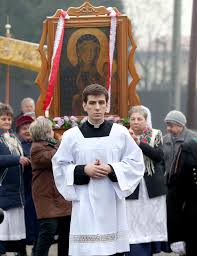 On May 29th, the Prime Minister of Poland, Beata Szydlo, and her husband, Edward, had the unique privilege of attending the first Mass of her newly ordained son, Fr. Tymoteusz Szydlo, at their home parish of Our Lady of Częstochowa in Przecieszyn in southern Poland. Father Szydlo is a member of the Priestly Fraternity of St. Peter, an order founded in 1988 and known for celebrating Mass in the Extraordinary Form. “Human words are unable to express the gratitude I owe You, my God,” Father said. “Therefore, I humbly ask You to keep me in Your holy service.”
On May 29th, the Prime Minister of Poland, Beata Szydlo, and her husband, Edward, had the unique privilege of attending the first Mass of her newly ordained son, Fr. Tymoteusz Szydlo, at their home parish of Our Lady of Częstochowa in Przecieszyn in southern Poland. Father Szydlo is a member of the Priestly Fraternity of St. Peter, an order founded in 1988 and known for celebrating Mass in the Extraordinary Form. “Human words are unable to express the gratitude I owe You, my God,” Father said. “Therefore, I humbly ask You to keep me in Your holy service.”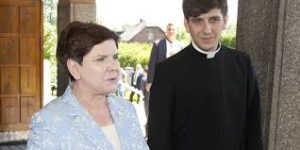 “This is not an easy road,” the Prime Minister said. “especially these days I think young people like them have an extremely important mission to fulfill. I’m keeping my fingers crossed for … all of my son’s fellow seminarians and for my son. I hope they will persevere and do a lot of good for everyone, for all of us. They are wonderful young people.”
“This is not an easy road,” the Prime Minister said. “especially these days I think young people like them have an extremely important mission to fulfill. I’m keeping my fingers crossed for … all of my son’s fellow seminarians and for my son. I hope they will persevere and do a lot of good for everyone, for all of us. They are wonderful young people.”



